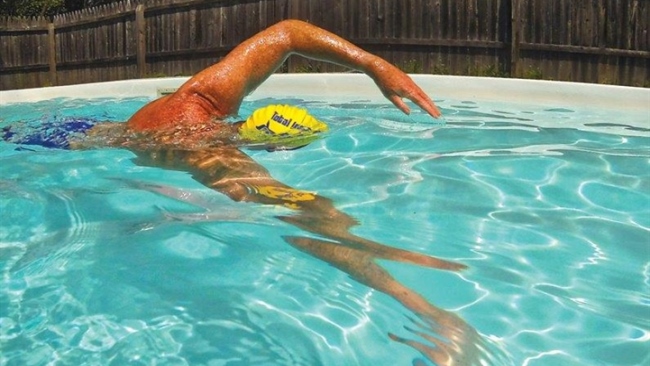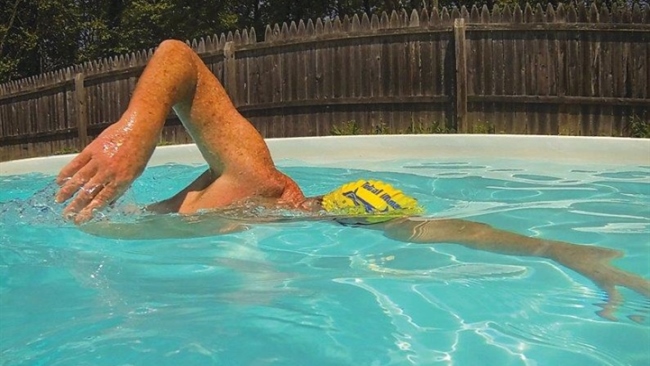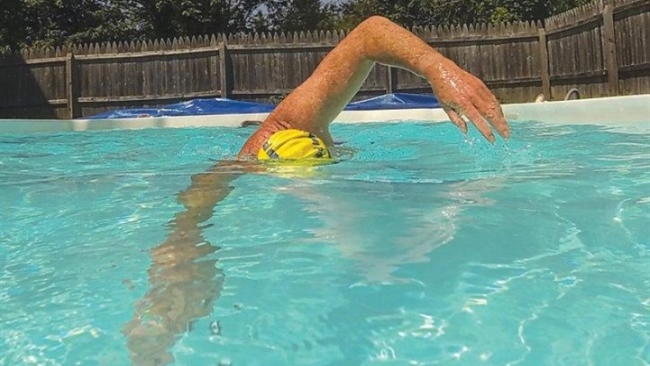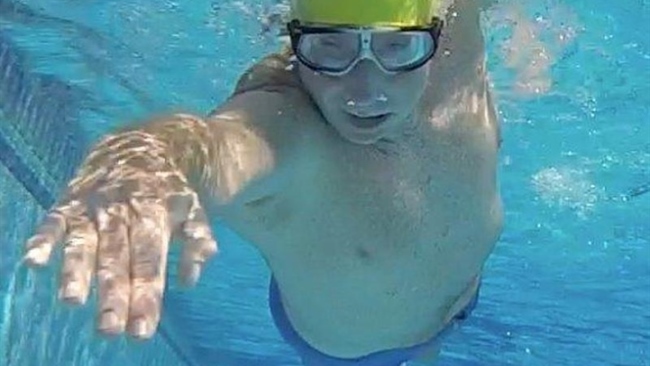By: Great Swim
13 September 2021
Front crawl is the fastest and most efficient known way for swimmers to move across the surface of the water. Mastering it, however, takes time and effort as it requires a complex series of moves involving the whole body. If you are serious about improving your front crawl, we recommend taking advice from a coach as receiving direct and personal feedback will accelerate the learning process.
Meanwhile, the following guidelines written by Terry Laughlin, founder of Total Immersion, will get you started.
INTEGRATE YOUR STROKE
Swimming efficient front crawl requires a high degree of coordination between the different parts of our body. However, our survival instinct is to thrash at the water in an uncoordinated fashion. We need to overcome our instincts in order to improve. The fastest way to improve is to reduce drag. Do this by making your entire body – from fingertips through torso to toes-as long, stable and sleek as possible. Imagine yourself switching constantly between a powerful streamline position on your left side to the same thing on your right side. This only works if your body moves as an integrated, coordinated unit.
-
Make sure head and spine are aligned at all times. This is a particular challenge when breathing. Keep head stable and visualise moving your head-spine line constantly forward through the water – like an arrow through the air-eliminating side to side or vertical movements.
-
Extend each arm forward and slightly downward along imaginary tracks in line with your shoulders. Press back in a straight line (no ‘S’-shaped pull) and relax on the recovery. Aim for symmetry between your two arms.
-
Keep your core engaged to minimise any wobbles or lateral movements.
-
Focus on keeping your legs in the slipstream of your upper body. Kick as little as possible, with small relaxed movements.
-
Drive your strokes from your core, not your arms
ARM RECOVERY
The ‘recovery’ in front crawl is the movement that returns the hand from where it exits the water near your hips to where it re-enters in front of your shoulder. It is often a neglected part of the stroke as most coaches and swimmers give exclusive focus first on the propulsive underwater phase. Ignoring it is a mistake because it plays a critical role in maintaining a balanced, stable core body.
-
Relax. As the name suggests, recovery is your chance to give your arm a little rest. Turn off all muscles from elbow down and suspend hand loosely from elbow as you bring your arm forward.
-
A little-known “rule” of efficient swimming is that any body part moving through the air must move in the direction of travel. Do this by striving to bring hand forward from exit to entry point by a perfectly straight line and while barely grazing the water’s surface with fingertips. Aim to have a gap between fingertips and water of 1 to 2 millimetres.
-
Re-enter hand to the water just a bit in front of your head – avoid overreach. Imagine cutting a slot in the surface with fingertips. Slide forearm through that slot.



THE UNDERWATER PHASE
The priority here is to make every stroke count. Not by applying more force to the water but by achieving a firm ‘grip’ on the water, and striving to move your body past your hand. After slicing your hand through the ‘slot,’ continue on the same path forward and slightly downward until it reaches full extension. At this point, your hand should be deeper than the lowest part of your body— generally the hips. Your body should form a long, sleek, stable line from fingertips to toes.

Next, ‘trap’ the water behind hand and forearm— fingertips pointing down and palm back. Press straight back--with precision rather than force--striving to hold your place, more than push water back. This allows powerful, tireless core muscle--rather than smaller, weaker arm muscles--to take on more of the work of propulsion. Drive forward with your opposite hip to create a sensation of moving your body past your hand rather than pulling hand backwards.

SEAMLESS BREATHING
Many people struggle to swim more than a length or two of front crawl not because they lack fitness but because of poor breathing technique. Primal survival instincts drive us to try to lift the head to avoid choking on the water. Ironically, this makes choking more likely by causing the body to sink as our heads are so heavy. Even more fundamental than head position – and often as noninstinctive – is how we move air in and out of the lungs. To breathe with ease, keep air exchange constant. Start exhaling as soon as you have inhaled. And make exhaling the primary focus of the breath, while inhaling simply ‘happens.’ Finally, avoid overfilling your lungs. Inhale just enough, as if you were singing.

Work On These Focal Points:
-
Keep head aligned with spine. This is the most fundamental skill in efficient front crawl swimming. Your head should feel cushioned by the water. Visualise head-spine line as a ‘laser’ projecting forward at all times, even when you breathe. Mastering front crawl is a long-term – but immensely rewarding – journey. This article is an overview of that process. For a complete guide, Total Immersion offers a downloadable Effortless Endurance Freestyle Self Coaching Course. Anyone can improve. It doesn’t require youth, athleticism, or special talents – only a curious and open mind and a desire to enjoy the process.
-
Swim with your whole body – moving arms, legs and head as an integrated part of a whole-body action, synchronised with core body rhythms. As your right hand enters the water and extends forward, your left shoulder rotates out of the water. To integrate breath with body movement, simply let chin follow shoulder to air.
-
Practise breathing to both sides. This doesn’t need to be every three strokes as in traditional bilateral breathing but could, instead, mean breathing one length to right, next length to left.
Mastering front crawl is a long-term – but immensely rewarding – journey. Anyone can improve. It doesn’t require youth, athleticism, or special talents – only a curious and open mind and a desire to enjoy the process.
This article was written for Outdoor Swimmer by Terry Laughlin, founder of Total Immersion
For more outdoor swimming inspiration and training advice, please visit www.outdoorswimmer.com
Sign up to our newsletter
Be the first to find out about Great Swim events
Sign up now